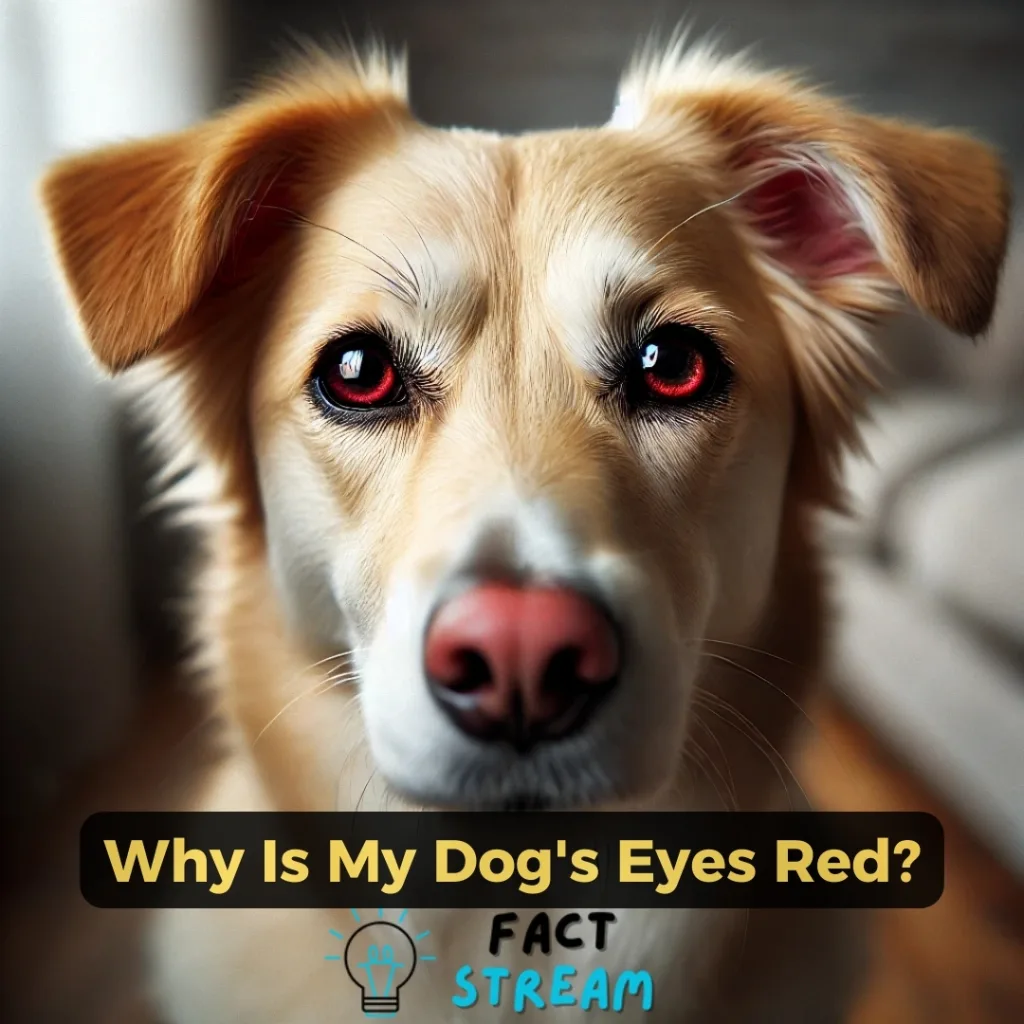Why Is My Dog’s Eyes Red?
Your dog greets you with a happy bark. You look closer. Something isn’t right. Their eyes are red. You might wonder, “Why is my dog’s eyes red?” This is a common problem for dogs. Red eyes can mean many things. Some are simple. Some are serious. This blog post will explain why your dog’s eyes are red. It will also help you know when to see the vet.
Understanding Dog Eye Anatomy
A dog’s eyes are similar to human eyes. Both have many parts working together. However, dogs have a few key differences.
Third Eyelid
Dogs have a third eyelid. It is called the nictitating membrane. This eyelid sits in the inner corner of the eye. It protects the cornea from scratches. It also helps spread tears.
Common Reasons for Red Eyes
1. Allergies
Allergies can cause red eyes. Like people, dogs can be allergic to many things. These include:
- Pollen
- Dust
- Mold
- Food
Allergies irritate the eyes. They may be itchy, watery, and red.
2. Eye Injury or Trauma
Dogs can injure their eyes while playing or exploring. Common injuries include:
- Scratches
- Foreign objects in the eye
- Trauma from a hard hit
These injuries can cause:
- Redness
- Pain
- Swelling
- Discharge
3. Conjunctivitis (“Pink Eye”)
Conjunctivitis is also called “pink eye.” It is the inflammation of the conjunctiva. The conjunctiva is the thin membrane covering the white of the eye and the inside of the eyelids.
Conjunctivitis can be caused by:
- Bacteria
- Viruses
- Allergies
- Irritants
Signs of conjunctivitis include:
- Redness
- Swelling
- Discharge
- Itching
4. Dry Eye Syndrome (KCS)
Dry eye syndrome is formally known as keratoconjunctivitis sicca (KCS). It happens when the tear glands don’t make enough tears. This can be caused by:
- Immune system problems
- Nerve damage
- Certain medications
- Hormonal diseases
With dry eye, the eyes are not properly lubricated. The cornea can become dry and irritated. Other signs of dry eye include:
- Redness
- Inflammation
- Mucus or eye gunk
5. Glaucoma
Glaucoma is a serious eye condition. Pressure builds up inside the eye. The pressure damages the optic nerve, which connects the eye to the brain. This can lead to vision loss and blindness.
Signs of glaucoma include:
- Redness
- Cloudiness
- Pain
- Dilated pupil
- Bulging eyeball
- Discharge
Glaucoma is an emergency. If you think your dog has glaucoma, see a vet right away.
6. Cherry Eye
Cherry eye occurs when a gland in the third eyelid pops out. The gland looks like a pink or red bump in the corner of the eye. It can be caused by genetics or trauma.
7. Other Possible Causes
Other less common reasons for red eyes include:
- Uveitis: Inflammation of the structures in the middle layer of the eye. Uveitis can be caused by many things. These include infections, cancer, or immune problems.
- Corneal ulcers: Sores on the surface of the cornea. Ulcers are often caused by trauma. Dry eye or infections can also cause ulcers.
- Tumors: Abnormal growths in or around the eye.
- High blood pressure: Can make blood vessels in the eye burst. This causes redness in the whites of the eyes.
- Breed susceptibility: Some dog breeds are more likely to have eye problems. These include:
- Brachycephalic (flat-faced) breeds like Pugs, Bulldogs, and Shih Tzus
- Breeds with long hair around their eyes like Poodles, Maltese, and Sheepdogs
When to See the Vet
Red eyes can signal a serious problem. Call your vet immediately if your dog:
- Has red eyes that don’t improve in a day or two.
- Is squinting or pawing at their eyes.
- Has thick, yellow, or green discharge from their eyes.
- Has a cloudy eye.
- Has a bulging eye.
- Seems to be in pain.
Eye problems can worsen quickly. Don’t wait to seek help.
What Happens at the Vet Visit?
The vet will check your dog’s eyes. They might run some tests to figure out the cause of the red eyes.
Ophthalmologic Exam
The vet will look inside the eye with an ophthalmoscope. This tool helps them see the structures of the eye in detail.
Schirmer Tear Test
The Schirmer Tear Test measures tear production. This helps diagnose dry eye syndrome. The vet places a small paper strip under the eyelid. The strip absorbs tears. The amount of wetness on the strip shows how many tears the eye is making.
Tonometry
Tonometry measures the pressure inside the eye. This test helps diagnose glaucoma. The vet uses a tool called a tonometer.
Fluorescein Stain
The vet places a special dye in the eye. The dye highlights any scratches or ulcers on the cornea. This helps diagnose corneal ulcers.
Blood Tests
Blood tests can help find other health problems that might be causing eye issues.
Treating Red Eyes
The vet will make a treatment plan based on what’s causing the red eyes. Treatments may include:
- Topical medications: These are eye drops or ointments. They treat infections, allergies, dry eye, and inflammation.
- Oral medications: Pills or liquids given by mouth. They can treat infections, allergies, and other health problems.
- Surgery: This may be needed for cherry eye, glaucoma, severe injuries, or tumors.
Never give your dog human eye drops. Human eye drops can be dangerous for dogs. Always use medications prescribed by your vet.
Keeping Your Dog’s Eyes Healthy
You can help prevent eye problems in your dog. Here are some ways to keep their eyes healthy:
Trim Hair Around Their Eyes
Trim the hair around your dog’s eyes. Long hair can irritate the eyes. It can also trap dirt and debris.
Clean Eye Gunk
Clean away any eye gunk with a damp cloth or pet-safe wipes. Clean from the inner corner of the eye outward. This will help prevent the spread of bacteria.
Watch for Changes
Pay attention to any changes in your dog’s eyes. Watch for:
- Redness
- Squinting
- Discharge
- Excessive rubbing or scratching
Early detection is important. It can prevent serious complications.
Regular Vet Checkups
Take your dog to the vet for regular checkups. This will help catch eye problems early. Early treatment can help save your dog’s vision.
Conclusion
Red eyes are a common problem in dogs. They are often easy to treat. However, red eyes can also be a sign of something serious. Always see your vet if your dog has red eyes. Early treatment is important. It can protect your dog’s vision. It can also keep your furry friend happy and healthy.


